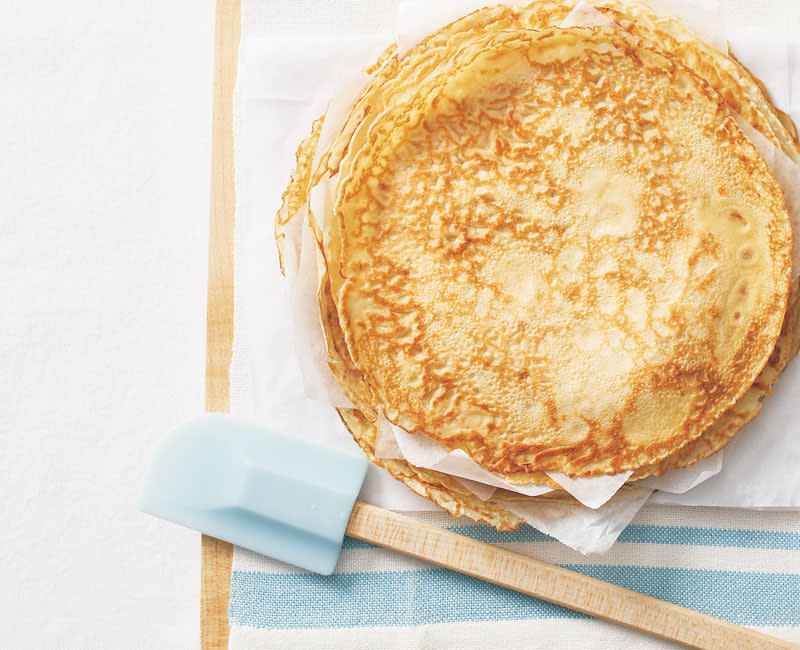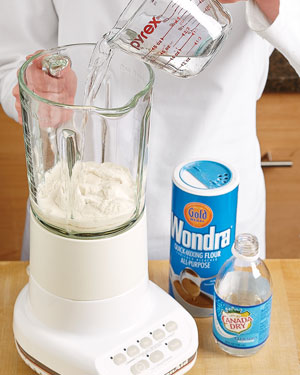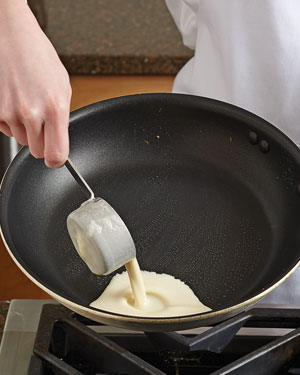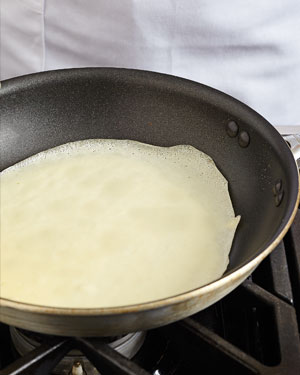How To Make French Crêpes
Essentially French-style pancakes, crêpes are a great foundation for sweet and savory fillings. The technique is simple, and using the right tools makes it easy. Whip up one of these recipes today, and turn your kitchen into a crêperie.

(Note: As an Amazon Associate, we earn from qualifying purchases made through affiliate links.)
Think of crêpes as paper-thin pancakes. It’s an easy batter to make, and once you have the basic cooking technique down, you can experiment with endless types of flours, different flavorings, and fun fillings, like tiramisu pastry cream. Plus, you can make them ahead. You don’t need any fancy equipment, but using the right tools will make your work so easy, you’ll want to make crêpes for every meal of the day.
A Sweet & Savory French Favorite
Escoffier, the Master French chef, offered eight crêpe recipes — all desserts — in his 1903 cookbook, Guide Culinaire. Throughout France, crêpes suzette are still adored in crêperies and cafes, yet new culinarians also serve savory crêpes as entrées. The brunch or lunch crêpe is also featured on restaurant menus all over the United States.
The versatile crêpe is perfect any time of day — breakfast, brunch, lunch, dinner, or dessert. From sweet, to savory, to a vehicle for Nutella, anything goes.
Ingredients & Tools for Making Great Crêpes
Instant flour, like Wondra, is a low-protein flour that’s finely ground. Julia Child recommended instant flour for crêpes, because it only needs a brief 10-minute resting period, which is needed for the flour granules to absorb the liquid to make a tender crêpe. Cake flour is the closest substitute. If using all-purpose flour, the batter needs to rest at least an hour.
Club soda, or seltzer water, is carbonated (and neutral tasting) so it helps aerate the batter, making for lighter, more delicate crêpes.
An electric blender ensures a smooth batter. It quickly combines all of the ingredients so you don’t overwork the batter, which can toughen the crêpes.
A 10" nonstick skillet that’s lightweight is your go-to pan for making crêpes. There’s no need to buy a specialized pan. Just be sure the nonstick coating is intact and is actually stick resistant. We like the Cuisinart Chef's Classic Skillet.
A silicone spatula should be part of any well-stocked kitchen. A large, wide spatula works particularly well for sliding crepes out of the non-stick pan. We use the Rubbermaid High Heat Silicone Spatula.
Parchment or waxed paper assures your crêpes won’t stick together when you stack them.
The Method: How to Make French Crêpes
For full ingredients and directions, grab our French Crêpes recipe and follow along.
Step 1: Mix the batter
Mix batter in a blender to ensure a smooth batter and so you don't overwork it. For tender, delicate crêpes, be sure to use instant-blending flour, like Wondra, and club soda.

Step 2: Pour into Hot Pan
Be sure skillet is sizzling hot before brushing with melted butter. Then pour crêpe batter to the side of the skillet using a 1/4-cup measure or a 2-ounce ladle.

Step 3: Tilt the Pan
Immediately tilt the skillet and swirl the batter to spread it over the bottom of the skillet. You can fill any holes with more batter.

Step 4: Cook Until Golden
Cook each crêpe until the edges are golden and lacy, and the bottom is lightly browned. Loosen crêpe using a spatula and your fingers. Gently flip crêpe; cook until second side is spotted brown, about 30 seconds more.

Tips for Crêpe Success
Let the batter rest 10–15 minutes to relax the gluten in the flour, making the crêpes more tender.
Whisk the batter anew and brush the pan with butter before cooking each crêpe for best results.
Use a slightly lighter hand than you would with Saturday morning flapjacks so as not to tear the tender cake.
Filling-wise, anything goes, but for springtime lunch or brunch, a filling of Smoked Salmon or Ham and Asparagus is especially welcome.
How to Store Crêpes
-
Once crêpes have thoroughly cooled, stack them between pieces of parchment or waxed paper.
-
Wrap them in plastic and store in a resealable plastic bag in the refrigerator for a few days or in the freezer for up to two months.
-
Completely thaw frozen crêpes before carefully pulling them apart.

Grab the Recipes
Now that you know how to make French Crêpes, grab our recipes for full ingredients & instructions, as well as our favorite ideas for fun crêpe fillings:
Product Recommendations
Interested in cooking? Need some supplies?
Check out some of the tools we like. All products featured on Cuisine at Home are independently selected by our editors; we may earn an affiliate commission from qualifying purchases through our links.